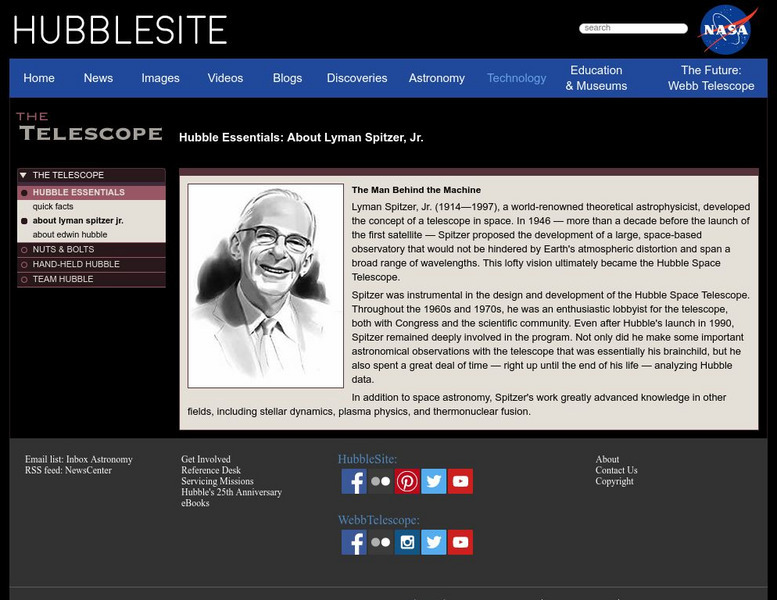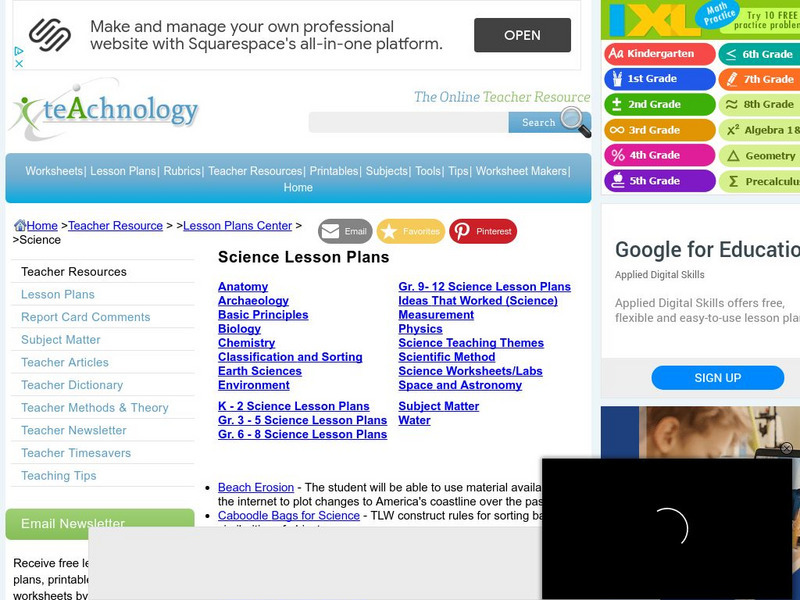Space Telescope Science Institute
Hubble Site: Lyman Spitzer Jr.
At the HubbleSite you can learn about Lyman Spitzer's (1914?1997 CE) inventions and accomplishments in the science field.
Cosmo Learning
Cosmo Learning: Introduction to Astrophysics
A collection of audio lectures from an introduction to astrophysics course taught at the University of California, Berkeley. The course discusses the solar system, stars, quantum mechanics, gravitation, and cosmology focusing on how...
NASA
Nasa: History of Venus Transit
NASA site recounts the history of the Venus Transits that have occurred over the past centuries and the various descriptions astronomers have written about them.
PBS
Pbs: Discovery of Quasars 1960
PBS offers a brief history of the discovery of quasars and the people involved.
Space Telescope Science Institute
The Hubble Heritage Project: Crab Nebula
A picture of the Crab Nebula and accompanying text.
University of Cambridge
University of Cambridge: Cosmology: Galaxies
This site from the Cambridge Relativity provides a brief description of the structure of the Milky Way galaxy. The parts described are the disc, bulge, and halo.
Curated OER
Smithsonian Institution Archives: Jacqueline L. Schroedter
Jacqueline L. Schroedter, a scientist at Lockheed Missiles and Space Company when this photograph was taken, had earned a B.S. in astronomy from University of Arizona. The company-supplied caption said: "She is active in the...
Teachnology
Teachnology: Science Lesson Plans
Great lesson plans covering a wide-range of science-related subjects. A wonderful resource for wonderful teachers!
NASA
Nasa: Wilkinson Microwave Anisotropy Probe (Wmap): The Milky Way
Description of the three major components of the Milky Way galaxy as well as images and resources for further reading.
Curated OER
Sequence of Events in a Supernova Explosion
The complex sequence of events in a supernova explosion are explained and illustrated.
Curated OER
Science Kids: Science Images: Satellite Dish
A photo of two huge satellite dishes aimed into space that are used for research in the field of space and astronomy.
Other popular searches
- Astronomy and Space Science
- Space and Astronomy
- "Astronomy and Space Science
- Astronomy and Space Lesson






